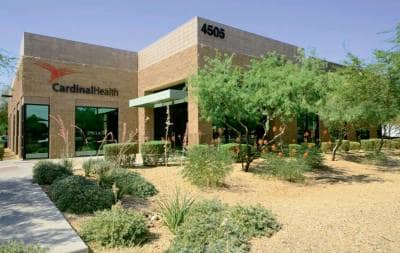By Kurt Woock
As chief information officer at a New Jersey hospital, Ron Fuschillo has a passion for implementing new IT in healthcare settings. His allegiances notwithstanding, he is a fair arbiter of the way in which the people who actually use these IT “solutions” typically perceive them: “We’ve done a lot of things to change healthcare, but not always things physicians like,” he said. New technology can often mean more hoops to jump through, more workflows to learn, more bugs to work out.
But that pattern of feeble user response to new technology has come to a halt with the implementation of TeraMedica’s Evercore Smartstore. “This is the first thing in IT I’ve seen in a long time where physicians are excited,” he said. The c-suite has reason to be excited, too: “From a cost standpoint, we’re already seeing savings—one of the first IT systems to do that in many years,” Fuschillo said. He projected that the system will save upward of $2 million during the next 2 years.
Englewood Hospital and Medical Center is located about five miles from the George Washington Bridge, which connects New Jersey to New York City. The 520-bed hospital sees about 550,000 annual outpatient visits and about 50,000 annual emergency department visits. Imaging plays an enormous role at this award-winning hospital, where 275,000 campus-based imaging studies and more than 40,000 outpatient-based studies are managed annually with 60TB of new data. Fuschillo keeps track of an imaging ecosystem that spans multiple off-site centers and comprises a half-dozen PACS and specialty imaging systems.

Prior to Evercore, Englewood did have a redundant storage system. Saving information was never the issue; retrieving it was. “All the images might flow in, but they are still locked into the viewer,” Fuschillo said. “We have six or seven PACS that are proprietary. Even if you have all this information, it’s useless unless you have the proprietary viewer.” If a fire, flood, hurricane, or other disaster were to hit the hospital, taking down any of its viewers, rendering the backed-up imaging data into usable information for physicians would cost money and time. If a few viewers were damaged or destroyed, the costs would rise quickly.
Fuschillo brought in multiple companies to explore possible solutions. He gave them each a list of 15 specific features he wanted in a new system. First, it needed to be compatible with any viewer. That eliminated many of the contenders. The pullback from traditional storage and back-up systems was intended to eliminate the dependency on proprietary technology. As the selection process continued to unfold, Fuschillo’s thought-process evolved. “At this point, we realized that we could do something really neat. We saw we could store the images in one location. We also saw the viewers can read other types of images—DICOM and non-DICOM. I asked if we could take images from the modality, skip the PACS, go straight to the VNA, and have the PACS read from the VNA. By not sending to proprietary PACS, the image is accessible anywhere.”
That is precisely what Evercore Smartstore module does. It natively manages and distributes DICOM and non-DICOM images (as well as audio, video, Word files, etc) on a vendor-independent platform. TeraMedica’s vendor-independent platform also can connect multiple PACS to any storage system, avoiding cumbersome and costly data migration. Data from Englewood’s multiple systems—GE Centricity PACS-IW Radiology, Hologic Mammography PACS, McKesson Medcon Cardiology PACS systems—are readily accessible, anywhere.
That accessibility has made the system popular. “Physicians appreciate being able to get a call about a patient at home and having a very simplistic means of getting the information they need,” Fuschillo said. Accessible on mobile devices, tablets, PCs, and Macs, the dashboard shows a patient’s most recent exams, regardless of specialty. Fuschillo said that being able to see the entirety of a patient’s imaging history at a glance has helped bridge specialties and has led to better patient care: “We’re breaking down barriers,” he said. “The -ology doesn’t matter.”
The system also promotes the long-term vision of the hospital. Fuschillo said Englewood plans to continue expanding, adding stand-alone imaging centers to its portfolio. This system allows easy integration with those new facilities. Because of the system’s flexibility, Fuschillo was able to consider more data farms when looking for off-site storage space, which gave him serious bargaining power. “If we were to buy an imaging center, I could tell you right now what it would cost to store its images.” That amount of freedom and knowledge positions Englewood well for whatever technological changes might lie ahead: Being untangled from proprietary systems, they can think beyond their viewer.




